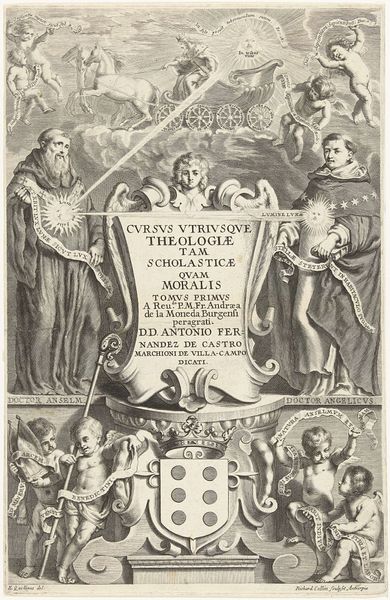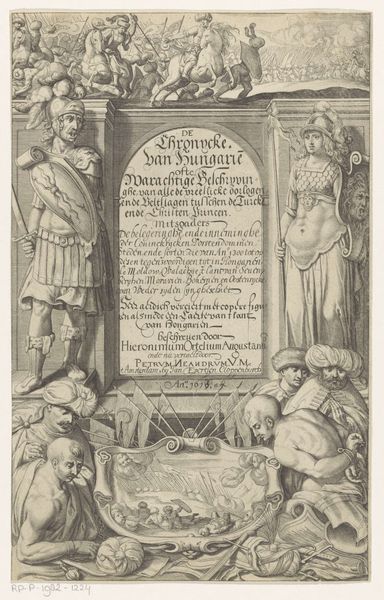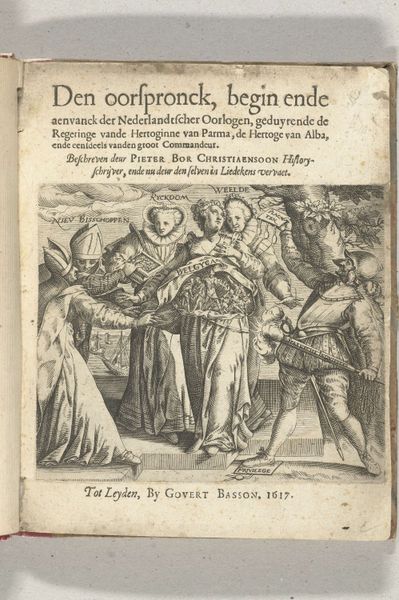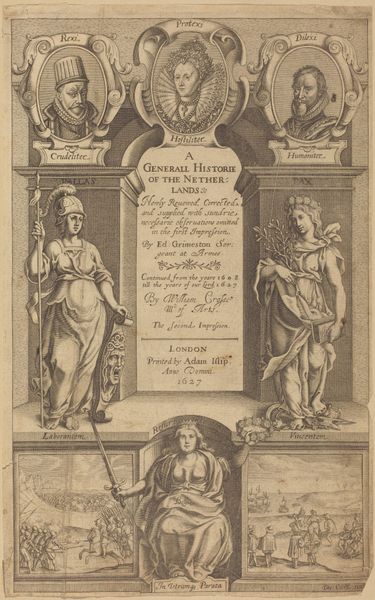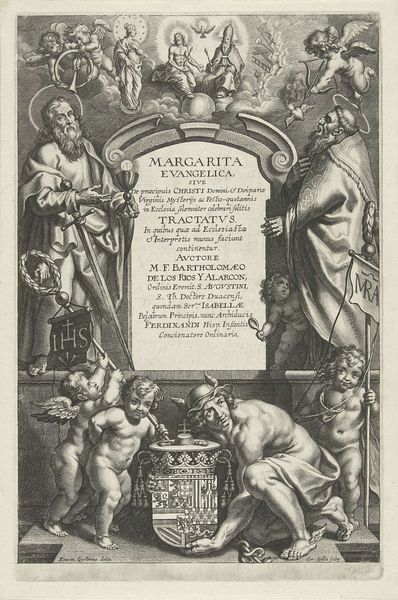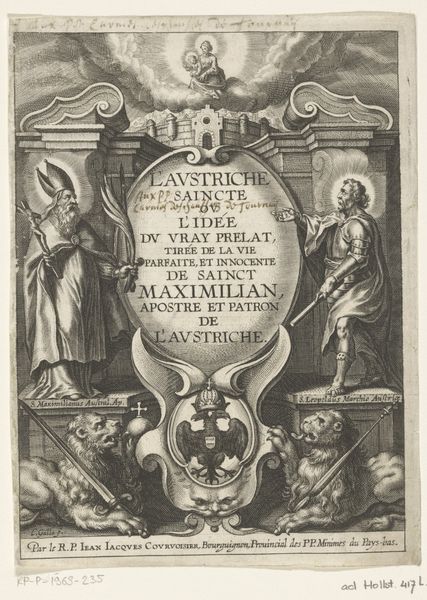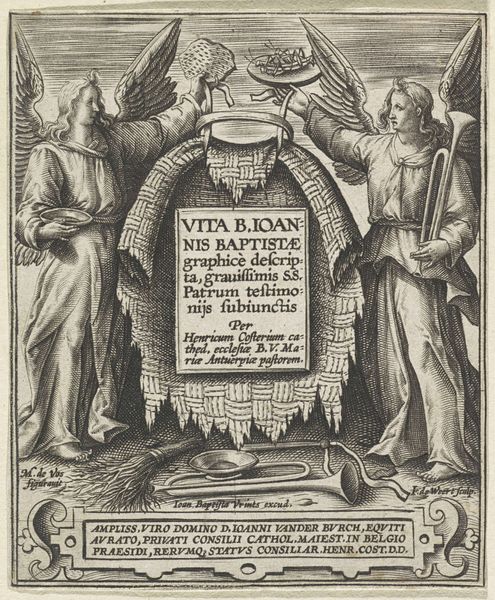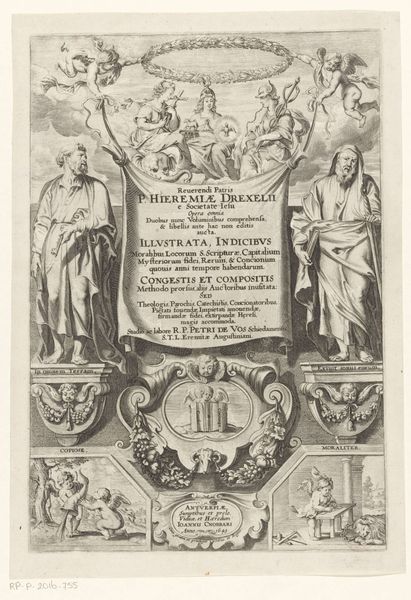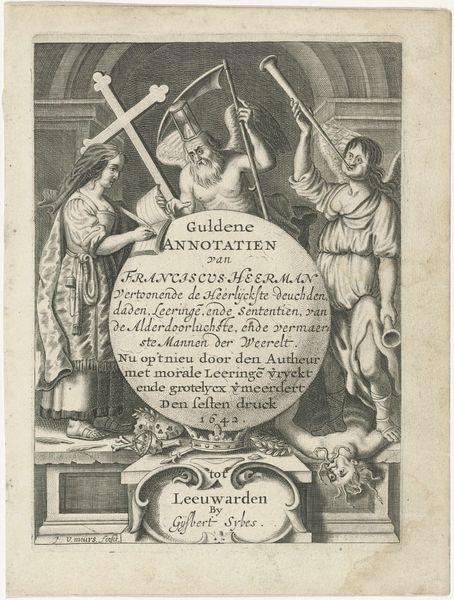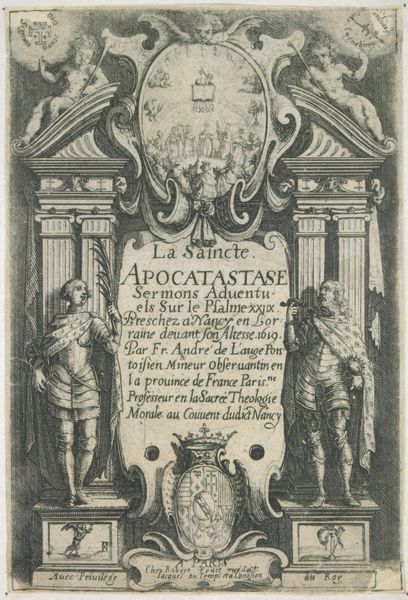
Titelpagina voor Chronique ofte Historische Geschiedenisse van Vrieslant, 1622 1622
0:00
0:00
pieterfeddesvanharlingen
Rijksmuseum
drawing, print, ink, engraving
#
portrait
#
drawing
#
allegory
#
baroque
#
pen drawing
# print
#
ink
#
cityscape
#
history-painting
#
engraving
Dimensions: height 286 mm, width 177 mm
Copyright: Rijks Museum: Open Domain
Curator: This is the title page for "Chronique ofte Historische Geschiedenisse van Vrieslant," dating back to 1622 and created by Pieter Feddes van Harlingen. The artwork, a pen and ink drawing, is currently held in the Rijksmuseum. It strikes me immediately as a study in contrasts – a somber but striking blend of text and image. Editor: Indeed! I am struck by how much is happening. From the overall composition, I notice allegorical figures and cityscapes crowded around a central inscription that promises a chronicle of Friesland, starting from the supposed creation of the world until the year 1622. It almost seems a visual assertion of power, truth and legitimacy of historical narration. Curator: Precisely! Let’s consider the materiality and craftsmanship involved. Note the detailed work, typical of engraving, carefully reproducing allegorical and historical themes. Each mark required meticulous work and consideration. What sort of audience would be reading this volume and therefore consuming this kind of visual messaging? Editor: The "privilege" mentioned indicates a level of state sanction involved in producing this historical narrative. So it's tied into Friesland's governing body in the 17th century, framing their region within the broader political landscape of the Dutch Republic and emphasizing their specific identity during a time of enormous shifts in geopolitical influence. Also, who exactly is the author and what are they seeking to establish? Curator: Dr. Pierium Winsemius. The title page explicitly acknowledges the labor and patronage that made the chronicle possible – printing as an industry with specific production methods during its age. But observe, also, the positioning of the allegorical figures; is Libertas to be seen wielding a weapon on behalf of the reader? Does "Historia" carrying all those books weigh down on her stride? Editor: That’s an important point. And what sort of message is presented to the readers through pairing those characters together with the cityscapes? By combining them visually, could van Harlingen be reinforcing ideals of regionalism as a function of history? Or does this layout also appeal to those readers’ senses, reinforcing the cultural norms that may affect their actions in turn? Curator: Well, as always, there’s more than meets the eye with these historical prints. Thanks for opening some of the doors on this unique Friesland record, let's just hope people see beyond just the surface detail as they read. Editor: I completely agree; by teasing apart just one title page, we open a Pandora's box of interconnected histories and socio-political readings!
Comments
No comments
Be the first to comment and join the conversation on the ultimate creative platform.
